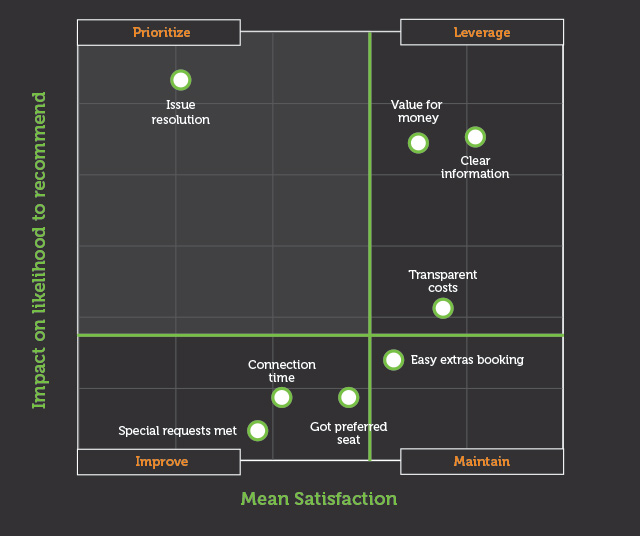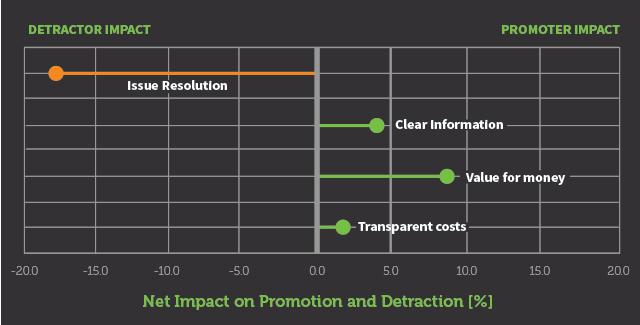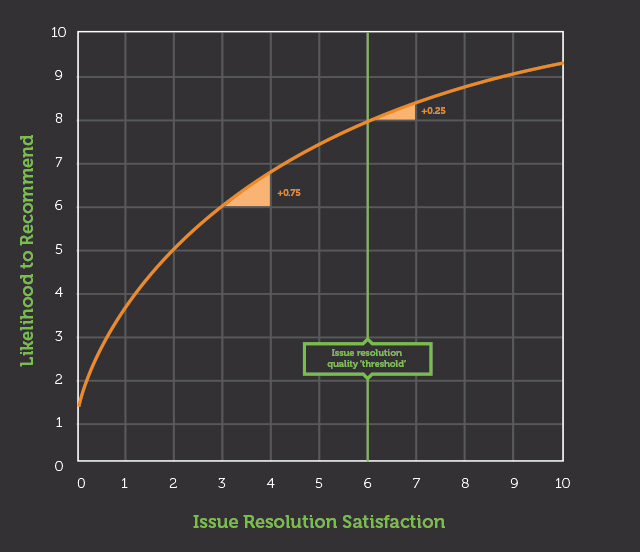The Dirty Secret of NPS
Sometimes “Good Enough” Is All You Need
At NICE Satmetrix, our overall goal is to help our clients transform themselves into customer centric organizations and deliver ever more frequent Promoter-creating customer experiences, which it turn drive economic success. But it’s possible to focus too much on the Promoter creation stories. Often the greatest customer experience victories lie in understanding how not to create Detractors. And in those cases, more often than not, “good enough” is all you need to strive for.
Avoid the Poison of Detractors

There’s no doubt that is vitally important to engage with, and amplify, promoter feedback. But don’t forget, Detractors are poison for your business. Firstly, they offer poorer financial rewards for your organization than Promoters (both in terms of revenue and cost-to-serve). And secondly, their negative word of mouth is toxic when it comes to new customer acquisitions. A negative comment, as we know, is many times more impactful than a positive comment.
You may already focus on Detractors through your closed loop activities. This is fundamental to any NPS program. Engaging, understanding, and recovering your Detractors can help you recognize the mistakes you keep repeating and provide you with a roadmap to guide you towards permanently fixing these mistakes.
No Dirty Bathrooms, Please
Remember that not all customer touch-points should be treated as Promoter-creating opportunities. For some interactions it is far more likely that you will create a Detractor for your business than a Promoter. And when this is true, it makes more sense to not think of things from the perspective of, “How do I get my customers to rate this touch-point experience higher?” but rather, “How do I reduce the number that rate this experience very poorly?” These are called “hygiene factors.”
One rather crude example: The cleanliness of airplane washrooms (a hygiene factor in more ways than one!). A clean washroom on an airplane is unlikely to create Promoters for an airline. However, a dirty washroom is very likely to create Detractors.
Key Drivers Point the Way
Here’s another example from an online travel agency, a NICE Satmetrix client. Their transactional survey, sent to customers returning from their holiday, measures the end-to-end experience of holiday-goers that use their service. A key driver analysis shows the relative impact of each touch-point in influencing the customers’ likelihood to recommend score.
The resulting quadrant map helps the travel agency identify high-priority touch-points, those that landed in the upper left hand quadrant. Here, “issue resolution” – the process of contacting the travel agency and getting issues raised and resolved –emerged as the key priority area. Areas like “value for money,” “clear information,” and “transparent costs” also emerged as important drivers.

Because ‘issue resolution’ is a hygiene factor, we can to look at this touch-point from a quality control perspective. The travel agency is unlikely to create Promoters through the ‘issue resolution’ experience, so the best approach is to plan how to not create detractors. This means identifying the right standard of service that needs to be provided to avoid creating Detractors.
When Not to Aim Too High
The graph below shows the relationship between satisfaction ratings for “issue resolution” (horizontal axis) and the likelihood to recommend score (vertical axis). Put another way, the line tells you what a customer’s probable likelihood to recommend score will be according to how satisfied they are with the “issue resolution” touch-point.

As annotated in the chart, a one-point satisfaction improvement will probably improve the likelihood to recommend score by 0.75 points, but only on the lower end of the scale. A similar one-point improvement higher up the scale will only yield a 0.25 improvement in the likelihood to recommend score. An issue resolution satisfaction rating of 6 appears to be the threshold between having a significant effect and having a smaller effect. That means that a satisfaction score of 6 is “good enough” in this case.
In this environment we would recommend setting a standard quality threshold of 6 as the key measure of success for the issue resolution touch-point. Thus the goal for the organization should be to focus on reducing the number of below-6 issue resolution experiences. This should be the overt target and metric of success for the teams responsible for delivering on the issue resolution experience.
What happens next? Well, things can get even more interesting at this point. The next step is to identify the operational metrics that are essential for quality success (for example, resolution time by type of query). This focus helps push real operational measures of success down into the different operating functions in the business. This gives the customer experience vision solid traction in the business and allows more employees visibility into, and influence over, what success looks like for their customers.
About the Authors
Paul Orovan is Global Director of Business Consulting and Ranjit Mohapatra is Senior Manager Analytics, NICE Satmetrix. Both Paul and Ranjit work in NICE Satmetrix’s London offices, and provide consulting services to leading global organizations.
